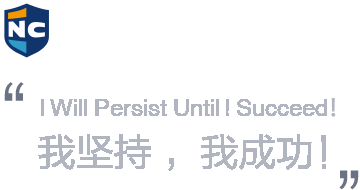劍4Test3雅思閱讀passage3原文譯文-獲得語(yǔ)言資料
2017/5/12 14:42:17來(lái)源:新航道作者:新航道
摘要:今天,上海新航道雅思頻道小編給大家?guī)?lái)劍4Test3雅思閱讀passage3原文譯文,希望可以幫助廣大雅思考生輕松備考雅思。
今天,上海新航道雅思頻道小編給大家?guī)?lái)劍4Test3雅思閱讀passage3原文譯文,希望可以幫助廣大雅思考生輕松備考雅思。
劍4Test3雅思閱讀passage3原文譯文——獲得語(yǔ)言資料
Obtaining Linguistic Data
獲得語(yǔ)言資料
A Many procedures are available for obtaining data about a language. They range from a carefully planned, intensive field investigation in a foreign country to a casual introspection about one’s mother tongue carried out in an armchair at home.
A我們有很多種可以用來(lái)獲得語(yǔ)言資料的方式。這些方法既可以是精心準(zhǔn)備,深入細(xì)致的國(guó)外實(shí)地調(diào)査,也可以是在自家搖椅上進(jìn)行的,對(duì)母語(yǔ)的一次不經(jīng)意的反思。
B In all cases, someone has to act as a source of language data — an informant. Informants are (ideally) native speakers of a language, who provide utterances for analysis and other kinds of information about the language (e.g. translations, comments about correctness, or judgements on usage). Often, when studying their mother tongue, linguists act as their own informants, judging the ambiguity, acceptability, or other properties of utterances against their own intuitions. The convenience of this approach makes it widely used, and it is considered the norm in the generative approach to linguistics. But a linguist’s personal judgements are often uncertain, or disagree with the judgements of other linguists, at which point recourse is needed to more objective methods of enquiry, using non-linguists as informants. The latter procedure is unavoidable when working on foreign languages, or child speech.
B無(wú)論用何種方式,總有人要充當(dāng)語(yǔ)言資料的來(lái)源——這個(gè)人就叫做資料提供者。資料提供者(理想狀態(tài)下)應(yīng)該是以該語(yǔ)言為母語(yǔ)的人,他可以提供做分析之用的語(yǔ)句,還可以給出有關(guān)該語(yǔ)言的其他信息(如翻譯,正誤評(píng)判,用法判斷等)。在研究本國(guó)語(yǔ)言時(shí),語(yǔ)言學(xué)家本人往往充當(dāng)資料提供者一角,比照他們的直覺(jué),來(lái)對(duì)語(yǔ)句的歧義現(xiàn)象、可接受度及其他特性加以評(píng)判。這種方法因其便利性而被廣泛使用,而且還被看作是生成式語(yǔ)言研究方式的規(guī)范。然而,一名語(yǔ)言學(xué)家的個(gè)人判斷通常要么是不確定的,要么就與其他語(yǔ)言學(xué)家的意見(jiàn)相左,此時(shí)就需要求助于更為客觀的提問(wèn)方式,讓語(yǔ)言學(xué)家本人以外的人來(lái)充當(dāng)資料提供者。
C Many factors must be considered when selecting informants — whether one is working with single speakers (a common situation when languages have not been described before), two people interacting, small groups or large-scale samples. Age, sex, social background and other aspects of identity are important, as these factors are known to influence the kind of language used. The topic of conversation and the characteristics of the social setting (e.g. the level of formality) are also highly relevant, as are the personal qualities of the informants (e.g. their fluency and consistency). For larger studies, scrupulous attention has been paid to the sampling theory employed, and in all cases, decisions have to be made about the best investigative techniques to use.
C在研究外語(yǔ)及兒童語(yǔ)言的時(shí)候,第二種方式是不可避免的在選擇資料提供人的時(shí)候要考慮多種因素——你面對(duì)的是單個(gè)說(shuō)話人(當(dāng)語(yǔ)言從未被描述過(guò)的時(shí)候出現(xiàn)的通常狀況),還是兩個(gè)人互動(dòng);是小組還是大規(guī)模的樣本。年齡、性別、社會(huì)背景以及身份的其他方面都很重要,因?yàn)閾?jù)信這些因素會(huì)影響使用語(yǔ)言的類別。對(duì)話的話題和社交場(chǎng)合的特征(比如正式程度)也極其相關(guān);同樣,資料提供者的個(gè)人資質(zhì)(比如語(yǔ)言流暢度和連貫性)也十分重要。對(duì)于較大規(guī)模的研究來(lái)說(shuō),要對(duì)所采用的抽樣方式一絲不茍,而且無(wú)論在什么情況下,都要決定采用最好的調(diào)查技術(shù)。
D Today, researchers often tape-record informants. This enables the linguist’s claims about the language to be checked, and provides a way of making those claims more accurate (‘difficult’ pieces of speech can be listened to repeatedly). But obtaining naturalistic, good-quality data is never easy. People talk abnormally when they know they are being recorded, and sound quality can be poor. A variety of tape-recording procedures have thus been devised to minimise the ‘observer’s paradox’ (how to observe the way people behave when they are not being observed). Some recordings are made without the speakers being aware of the fact — a procedure that obtains very natural data, though ethical objections must be anticipated. Alternatively, attempts can be made to make the speaker forget about the recording, such as keeping the tape recorder out of sight, or using radio microphones. A useful technique is to introduce a topic that quickly involves the speaker, and stimulates a natural language style (e.g. asking older informants about how times have changed in their locality).
D如今,語(yǔ)言研究者通常都會(huì)為資料提供人錄音。這就使語(yǔ)言學(xué)家針對(duì)這些語(yǔ)言的某些論斷變得可以接受檢查,并且還能提供一種使這些觀點(diǎn)更為精確的方式(反復(fù)聽(tīng)“難”懂的語(yǔ)言)。但是想要獲得自然的,高質(zhì)量的資料可沒(méi)那么容易。當(dāng)?shù)弥讳浺舻臅r(shí)候,人們說(shuō)話的方式就不同了,而且音質(zhì)可以很差。因此,一系列的錄音方式就被設(shè)計(jì)出來(lái)以便盡可能地解除研究者的矛盾(如何能夠觀察人們的行為方式又不讓他們知道正在被觀察)。有時(shí)候,說(shuō)話人是在毫不知情的情況下被錄音的——這一方式可以獲得極自然的材料,但是道德方面的反對(duì)意見(jiàn)也是預(yù)料之中的事。另外,也可以嘗試讓說(shuō)話人忘記錄音這回事,比如把錄音機(jī)藏起來(lái),或是使用無(wú)線麥克風(fēng)。還有一種管用的方式,就是提出一個(gè)說(shuō)話人能夠迅速融入的話題,從而激發(fā)一種自然的語(yǔ)言風(fēng)格(比如詢問(wèn)年長(zhǎng)的資料提供者:在他們的家鄉(xiāng),時(shí)代是如何變遷的)。
E An audio tape recording does not solve all the linguist’s problems, however. Speech is often unclear and ambiguous. Where possible, therefore, the recording has to be supplemented by the observer’s written comments on the non-verbal behaviour of the participants, and about the context in general. A facial expression, for example, can dramatically alter the meaning of what is said. Video recordings avoid these problems to a large extent, but even they have limitations (the camera cannot be everywhere), and transcriptions always benefit from any additional commentary provided by an observer.
E然而,磁帶錄音的方式并不能夠解決語(yǔ)言學(xué)家面臨的所有問(wèn)題。講話通常又不清楚,又有歧義。因此,如果可能的話,要對(duì)參與者的非語(yǔ)言行為以及整體語(yǔ)境做出書(shū)面評(píng)述,作為對(duì)錄音的補(bǔ)充。例如,一個(gè)面部表情就可以徹底改變一句話的意思。在很大情況下,可以用錄像方式避免這樣的問(wèn)題,但是就算是這個(gè)方式也存在局限性(攝像機(jī)不可能安得到處都是),而且文字謄本總是要得益于觀察者另外提供的注解。
F Linguists also make great use of structured sessions, in which they systematically ask their informants for utterances that describe certain actions, objects or behaviours. With a bilingual informant, or through use of an interpreter, it is possible to use translation techniques (‘How do you say table in your language?’). A large number of points can be covered in a short time, using interview worksheets and questionnaires. Often, the researcher wishes to obtain information about just a single variable, in which case a restricted set of questions may be used: a particular feature of pronunciation, for example, can be elicited by asking the informant to say a restricted set of words. There are also several direct methods of elicitation, such as asking informants to fill in the blanks in a substitution frame (e.g. I___ see a car), or feeding them the wrong stimulus for correction (‘Is it possible to say I no can see?’).
F語(yǔ)言學(xué)家還需要大量使用結(jié)構(gòu)化會(huì)議,當(dāng)中他們系統(tǒng)地要求資料提供者說(shuō)出有關(guān)某種動(dòng)作、物體及行為的語(yǔ)句。如果資料提供者是說(shuō)雙語(yǔ)的,或者通過(guò)翻譯的幫助,我們就有可能用到翻譯技巧(比如你們?cè)趺凑f(shuō)桌子這個(gè)詞)。通過(guò)使用面試表格和調(diào)查問(wèn)卷,我們能夠在很短的時(shí)間里覆蓋大量的知識(shí)點(diǎn)。通常,研究者只想獲得有關(guān)某個(gè)語(yǔ)言變項(xiàng)的信息,在這種情況下,就必須使用一套嚴(yán)格設(shè)置好的問(wèn)題:比如說(shuō),發(fā)音上的某個(gè)特殊規(guī)則,可以用要求資料提供者讀出一組嚴(yán)格設(shè)定的單詞的方法引出來(lái)。我們還有幾種直接的誘導(dǎo)方式,比如讓資料提供人填寫(xiě)替換表中的空格(比如:我__看到一輛汽車),或者給他們做改錯(cuò)練習(xí)(“能不能說(shuō)我能不看到?”)。
G A representative sample of language, compiled for the purpose of linguistic analysis, is known as a corpus. A corpus enables the linguist to make unbiased statements about frequency of usage, and it provides accessible data for the use of different researchers. Its range and size are variable. Some corpora attempt to cover the language as a whole, taking extracts from many kinds of text; others are extremely selective, providing a collection of material that deals only with a particular linguistic feature. The size of the corpus depends on practical factors, such as the time available to collect, process and store the data: it can take up to several hours to provide an accurate transcription of a few minutes of speech. Sometimes a small sample of data will be enough to decide a linguistic hypothesis; by contrast, corpora in major research projects can total millions of words. An important principle is that all corpora, whatever their size, are inevitably limited in their coverage, and always need to be supplemented by data derived from the intuitions of native speakers of the language, through either introspection or experimentation.
G為了語(yǔ)言分析而被編纂起來(lái)的語(yǔ)言代表樣本被叫做語(yǔ)料庫(kù)。語(yǔ)料庫(kù)使得語(yǔ)言學(xué)家能夠?qū)σ环N用法的頻率加以客觀陳述,而且還可以為其他的研究者所用。語(yǔ)料庫(kù)的范圍和規(guī)模是各不相同的。有些語(yǔ)料庫(kù)試圖將語(yǔ)言作為一個(gè)整體來(lái)研究,從不同類型的文章中節(jié)選材料;其他的則十分挑剔,只提供針對(duì)某個(gè)特殊語(yǔ)言現(xiàn)象的一組材料。語(yǔ)料庫(kù)的大小是由實(shí)踐因素決定的,比如說(shuō)可以用來(lái)搜集、處理、存儲(chǔ)資料的時(shí)間:要想為幾分鐘的演講做一個(gè)精確的原文,可能要花上數(shù)小時(shí)的時(shí)間。有時(shí)候,個(gè)小資料樣本就足以證明一種語(yǔ)言學(xué)假說(shuō)。相反地,重大研究項(xiàng)目的語(yǔ)料庫(kù)加起來(lái)足有上百萬(wàn)字。一個(gè)重要的原則是,無(wú)論大小,所有的語(yǔ)料庫(kù)在覆蓋面上都不可避免地存在局限性,因此,它們總是需要通過(guò)內(nèi)省或?qū)嶒?yàn)的方式,被源自母語(yǔ)者直覺(jué)的資料補(bǔ)充。
以上就是小編為大家?guī)?lái)關(guān)于《劍橋雅思4真題》閱讀部分供大家閱讀參考,新航道雅思資料頻道將第一時(shí)間為考生發(fā)布最全、最新、最專業(yè)的雅思資訊及雅思考試資料及機(jī)經(jīng).
免費(fèi)獲取資料
熱門(mén)搜索: 上海雅思培訓(xùn)哪家好| 上海雅思封閉班| 上海雅思一對(duì)一培訓(xùn)| 雅思全日制培訓(xùn)| 上海新航道| 2022年雅思寫(xiě)作話題題庫(kù)+范文|
熱報(bào)課程
- 雅思課程
| 班級(jí)名稱 | 班號(hào) | 開(kāi)課時(shí)間 | 人數(shù) | 學(xué)費(fèi) | 報(bào)名 |
|---|
免責(zé)聲明
1、如轉(zhuǎn)載本網(wǎng)原創(chuàng)文章,情表明出處
2、本網(wǎng)轉(zhuǎn)載媒體稿件旨在傳播更多有益信息,并不代表同意該觀點(diǎn),本網(wǎng)不承擔(dān)稿件侵權(quán)行為的連帶責(zé)任;
3、如本網(wǎng)轉(zhuǎn)載稿、資料分享涉及版權(quán)等問(wèn)題,請(qǐng)作者見(jiàn)稿后速與新航道聯(lián)系(電話:021-64380066),我們會(huì)第一時(shí)間刪除。
全真模擬測(cè)試
雅思動(dòng)態(tài)

DeepSeekx雅思官方:中國(guó)考生...
制作:每每








